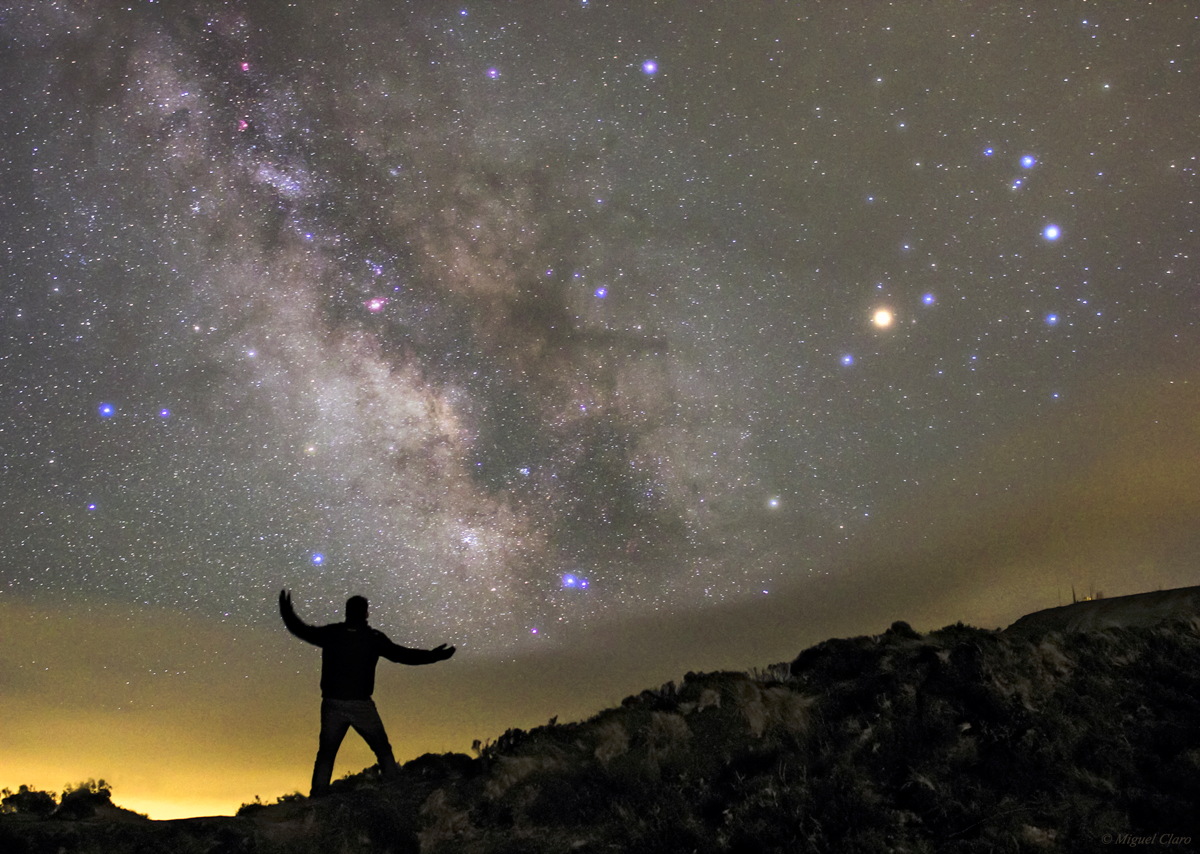See the moon in the grip of the Scorpion's claws tonight
The waning moon will be in the constellation of Scorpius near the stars that form its claws.

The moon will find itself in the grip of a cosmic scorpion in the early hours of Monday (March 13) as it visits the stars that comprise the claws of the Scorpius constellation, the Scorpion.
Look to the southern sky in the early morning before dawn to find the moon by the stars that make up the Scorpion's claws: Jabbah or Nu Scorpii, Acrab or Beta Scopii, Dschubba or Delta Scorpii, Pi Scorpii, and Rho Scor. The moon will be in its waning gibbous phase while its illuminated face recedes towards the half-illuminated third quarter moon on Wednesday (March 15).
That means that the moon's predicament will serve as an excellent guide to spotting these fascinating celestial objects in the southern sky. Some of this line of white stars can be spotted with the naked eye, while others can only be resolved by binoculars.
Related: Night sky, March 2023: What you can see tonight [maps]
Read more: Scorpius Constellation: Facts About the Scorpion

Looking for a telescope to see the claws of Scorpius? We recommend the Celestron Astro Fi 102 as the top pick in our best beginner's telescope guide.
It is observing with even a small backyard telescope that really allows the stellar claws of Scorpius to shine, however. This reveals that three of these stars, Nu Scorpii, Beta Scopii, and Delta Scorpii, are actually composed of multiple stars.
Located 470 light years away, Nu Scorpii with a magnitude of 4 appears to be composed of four stars when viewed with a telescope, with its components being blueish in color. These 4 stars comprise two close pairings Nu Scorpii AB and CD that are separated by about 41 arcseconds. But, this isn't the end of the stellar secrets held by Nu Scorpii.
Astronomers currently believe this star to actually be comprised of at least seven individual stars in a rare "septuple" star system. We only currently know of one other septuple system and astronomers think such large groupings of stars are rare because they are often unstable. This instability leads them to break down into smaller groupings like binary pairings of two stars.
Get the Space.com Newsletter
Breaking space news, the latest updates on rocket launches, skywatching events and more!
Beta Scorpii appears to be a double star when viewed with a small telescope, but deeper investigation with more sophisticated astronomical instruments reveals this star, also once called Graffias which literally means "claws" in Italian, is comprised of at least six stars. The entire Beta Scorpii system is located around 400 light-years away and is believed to be very young at just a few million years old compared to our 4.6 billion-year-old star, the sun.

Delta Scorpii is a binary star located about 491 light-years from Earth that is also sometimes referred to as "the crown of the scorpion." The main component of Delta Scorpii, δ Scorpii A, is a massive star 5 times the size of the sun with 13 times its mass. The star is around 14,000 times hotter than the sun. The other star, δ Scorpii B, appears to orbit this stellar titan once every 10.5 years, and astronomers are currently debating the possibility there is a third star in the system.
The moon will have escaped the grip of Scorpius by Tuesday morning (March 14) as it moves to the orange-hued star Antares located 600 light-years from Earth. The moon, which will be near half-illuminated approaching its last quarter phase, will be so close to the red giant star in the pre-dawn sky that the two will be visible together with binoculars.
If you're hoping to catch a look at the moon as it is gripped by Scorpius, our guides for the best telescopes and best binoculars are a great place to start. Binoculars offer a wider view, allowing you to take in entire constellations.
If you're looking to snap photos of the night sky in general, check out our guide on how to photograph the moon, as well as our best cameras for astrophotography and best lenses for astrophotography.
Editor's Note: If you snap the moon or Scorpius and would like to share it with Space.com's readers, send your photo(s), comments, and your name and location to spacephotos@space.com.
Follow us @Spacedotcom, or on Facebook and Instagram.
Join our Space Forums to keep talking space on the latest missions, night sky and more! And if you have a news tip, correction or comment, let us know at: community@space.com.

Robert Lea is a science journalist in the U.K. whose articles have been published in Physics World, New Scientist, Astronomy Magazine, All About Space, Newsweek and ZME Science. He also writes about science communication for Elsevier and the European Journal of Physics. Rob holds a bachelor of science degree in physics and astronomy from the U.K.’s Open University. Follow him on Twitter @sciencef1rst.









